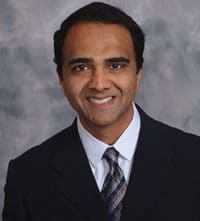
VascularCare
4255 Altamont Place
101
White Plains, MD 20695
VascularCare
6120 Brandon Ave.
216
Springfield, VA 20695

More Beauty Skin Care & Gorgeous Smiles Articles
Do You Have Varicose Veins?
Many people have varicose veins, which cause unsightly legs, leg pain and swelling. Varicose veins are caused by venous reflux disease.
Healthy leg veins contain valves that open and close to assist in the return of blood back to the heart. With venous reflux disease, the valves that keep the blood flowing out of the legs and back to the heart become damaged. The valves do not close properly, allowing blood to flow in reverse and pool in the leg veins. This causes the superficial veins to swell and bulge resulting in unsightly varicose veins, leg swelling, pain and fatigue.
Without treatment, venous reflux disease can also lead to skin pigment changes in the legs as well as ulcerations that are slow to heal. Elevating the legs, wearing compression stockings, rest and pain medications can offer temporary relief of some symptoms of venous reflux disease, but do not fix the underlying problem.
In recent years, a new procedure has become available to treat venous reflux disease. This procedure, known as endovenous saphenous vein closure, can provide a permanent solution to the cause and symptoms of venous reflux disease. Venous reflux disease is diagnosed with an ultrasound of the legs.
The procedure is performed if venous reflux is identified by ultrasound. A local anesthetic is used to minimize discomfort along the path of the catheter that is inserted into the vein. A small catheter is inserted into the saphenous vein, a superficial branch of the larger, deeper femoral vein.
Using radio-frequency (RF) energy delivered through the inserted catheter, heat is applied to the vein wall, which causes the vein walls to come together and close. Once the vein is closed, blood is re-routed to healthy veins.
Upon completion of the procedure, a simple bandage is applied, and the leg is gently wrapped in dressings to aid in healing. Patients are encouraged to walk frequently after the procedure and typically return to daily activities within a day. A follow-up visit is then scheduled for three days after the procedure, to check for any complications and to verify that the vein has remained closed. Any discomfort is usually well controlled with over the counter pain medications.
Another way to perform endovenous saphenous vein closure is with a laser. However, data has very recently been published in medical journals that shows RF has a lower rate of complications, specifically bruising and pain, compared with the laser, allowing patients to return to their normal activities quicker. Therefore, many physicians are now switching to RF to treat varicose veins.
The procedure can be done safely in an outpatient office, and is usually covered by most major insurance companies. The treatment itself is usually completed in about an hour, and some patients even sleep right through the procedure. About 95% of patients remain free of varicose veins over the long term, according to medical data. To reduce the risk of complications, the procedure is best performed by a physician who has formal training in endovenous techniques.
If you are experiencing any symptoms of venous reflux disease or have unsightly, swollen varicose veins, talk to your doctor about a referral to a vein specialist. With radio frequency treatment, you can have beautiful legs again.
Other Articles You May Find of Interest...
- Rejuvenate Your Skin: How Cutting-Edge Science Transforms Personalized Skincare
- Five Options for an Improved Neck Contour
- Can You Benefit From Braces?
- Exploring the Safety and Effectiveness of CoolSculpting Treatments
- How to Prepare for Your Visit to the Dermatologist
- What’s the Right Age To Have Cosmetic Surgery?
- Unlocking Timeless Beauty: How Beauty and Skin Care Services Can Transform Your Senior Years

















